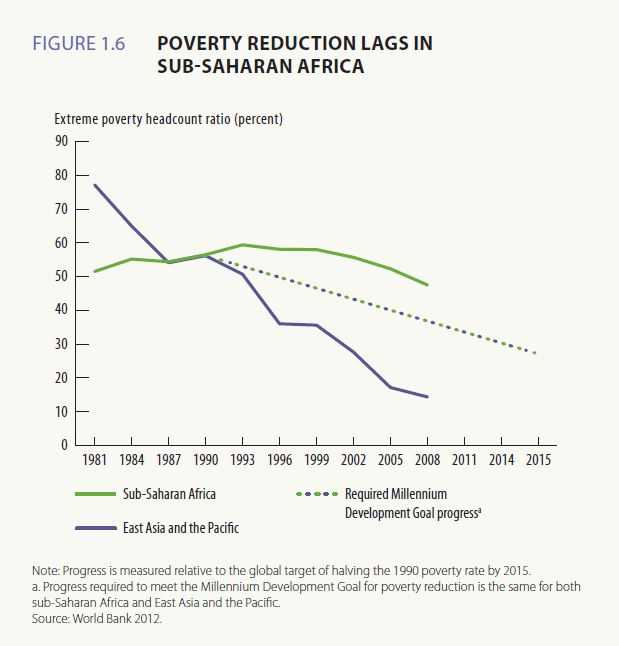 Despite rapid economic growth, Africa is still one of the most food-insecure areas in the world with one quarter of the people undernourished. The United Nations Development Programme (UNDP)’s recently released Africa Human Development Report 2012: Towards a Food Secure Future shows that in addition to the impressive GDP growth in the continent, African countries need to reshape their national development strategies to respond to new changes in the global food security context in order to lift more Africans out of hunger and malnutrition.
Despite rapid economic growth, Africa is still one of the most food-insecure areas in the world with one quarter of the people undernourished. The United Nations Development Programme (UNDP)’s recently released Africa Human Development Report 2012: Towards a Food Secure Future shows that in addition to the impressive GDP growth in the continent, African countries need to reshape their national development strategies to respond to new changes in the global food security context in order to lift more Africans out of hunger and malnutrition.
Economic Growth ≠ Food Security
Economic growth rate in Africa stayed at an average of 6.5 percent per year from 2004 to 2008, only dropping to 2.7 percent in 2009 due to the global financial crisis. But the pace of poverty reduction is much slower: from 1981 to 1999, the share of population living in extreme poverty in sub-Saharan Africa increased from 52 percent to 58 percent before declining to 48 percent in 2008.

Acting on Four Critical Drivers of Change
The report argues that eliminating hunger and malnutrition for all Africans requires immediate actions in four critical areas: increasing the agricultural productivity of smallholder farmers; implementing more effective nutrition policies, especially for children; building resilient communities and sustainable food systems; and empowering women and the rural poor.
“Success in these areas will come only if we view food security as a challenge that extends beyond sectoral mandates and reaches across the national development agenda and if we better integrate humanitarian and development work to strengthen the resilience of people and their communities to even the most severe crisis,” the administrator of UNDP Helen Clark states in the beginning of this new report.
Useful links:

